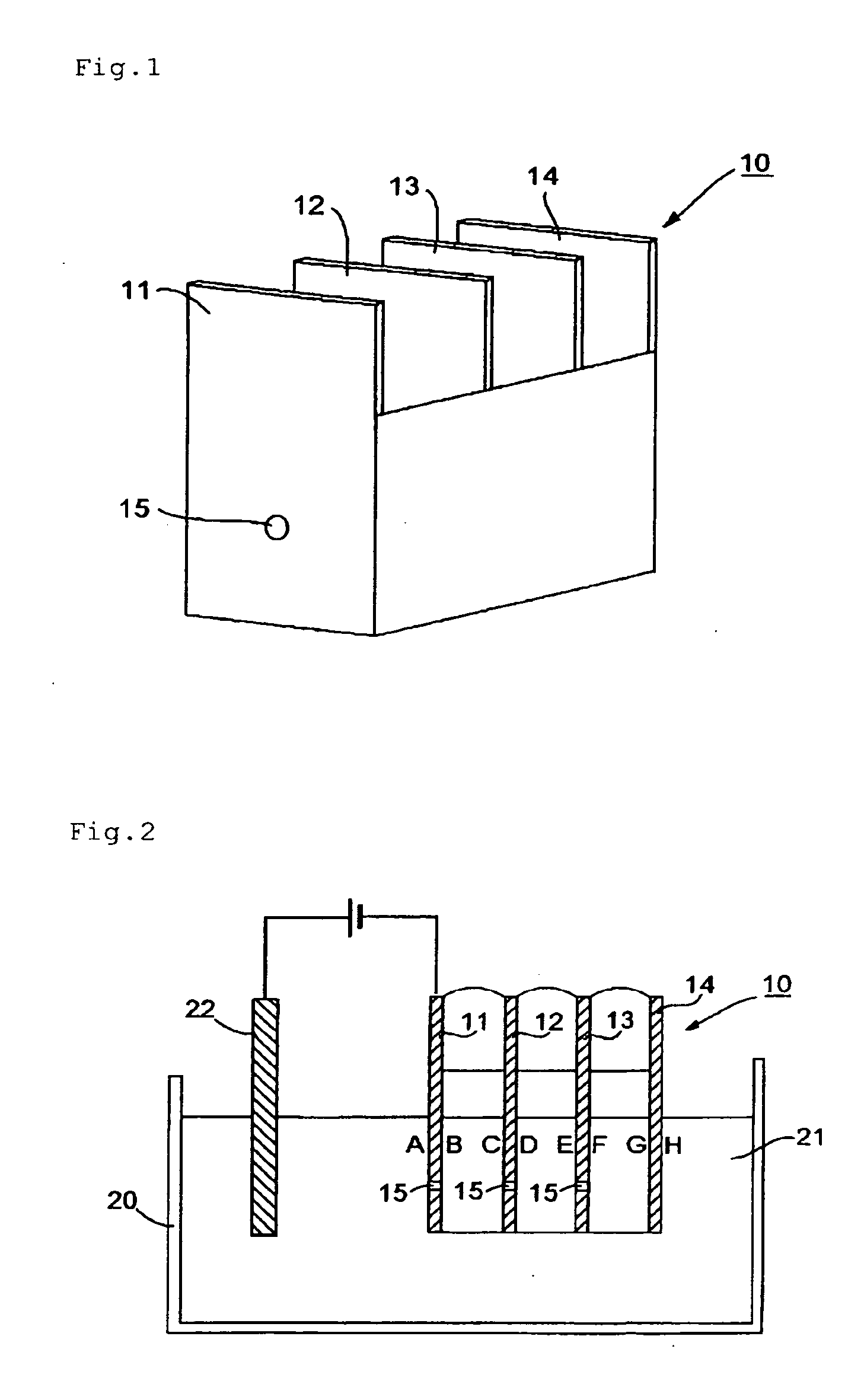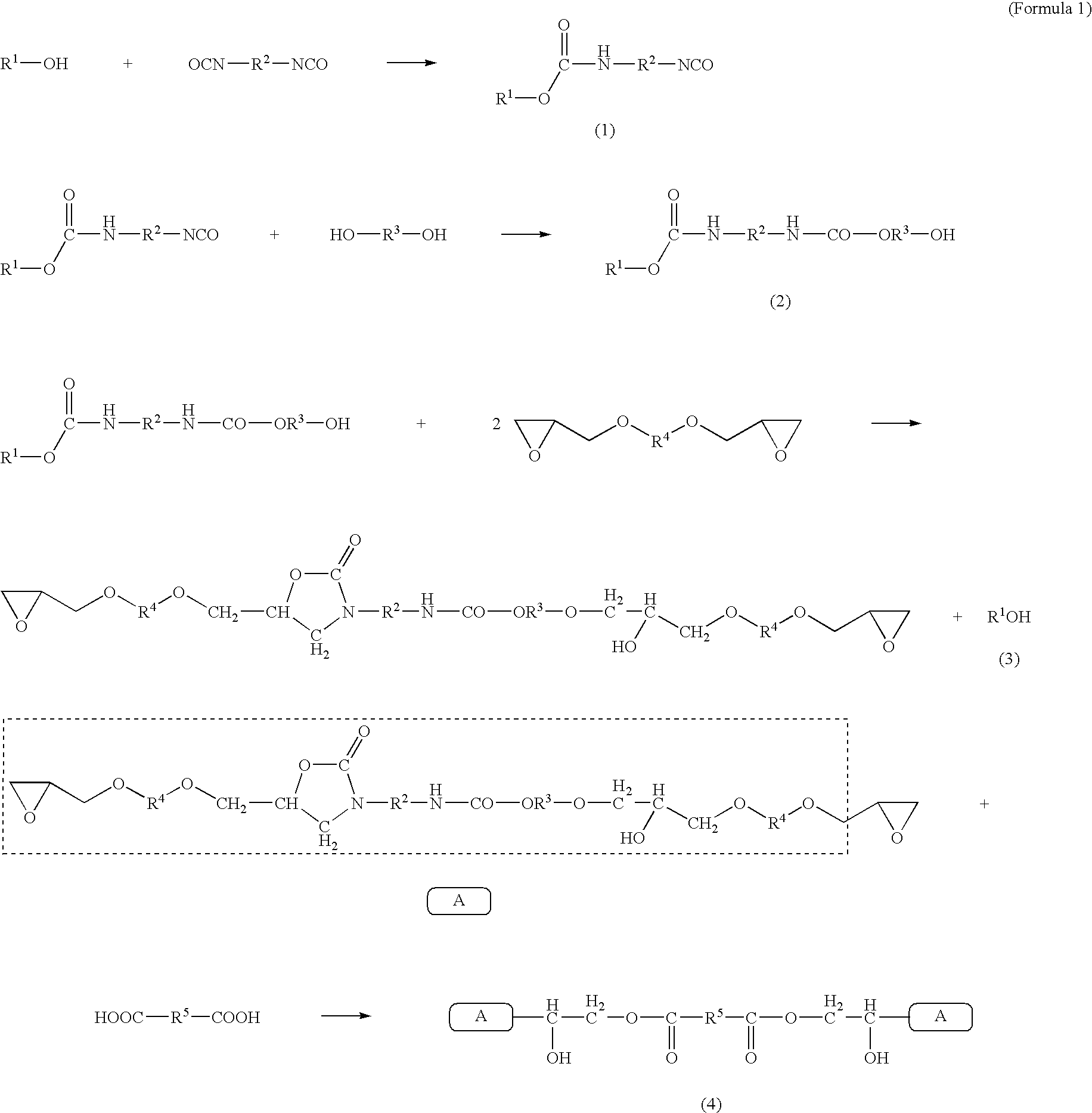Method for making amine-modified epoxy resin and cationic electrodeposition coating composition
- Summary
- Abstract
- Description
- Claims
- Application Information
AI Technical Summary
Benefits of technology
Problems solved by technology
Method used
Image
Examples
preparation example 1
[0172] Preparation of Blocked Polyisocyanate Curing Agent (in the First and Second Embodiments)
[0173] 1250 parts of diphenylmethane diisocyanate and 266.4 parts of methyl isobutyl ketone (hereinafter, referred to as MIBK) were loaded to a reaction vessel, and 2.5 parts of dibutyltin dilaurate were added thereto after heating to 80° C. A solution of 226 parts of ε-caprolactam dissolved in 944 parts of butyl cellosolve was dropped thereto at 80° C. over 2 hours. The reaction was retained at 100° C. for 4 hours, it was confirmed that absorption based on an isocyanate group disappeared in IR spectrum measurement, and left to be cooled. 336.1 parts of MIBK were added and thereby, a blocked isocyanate curing agent having a glass transition temperature of 8° C. was obtained.
preparation example 2
[0174] Preparation of Amine-Modified Epoxy Resin (in the First Embodiment)
[0175] 35 parts of 2,4- / 2,6-tolylenediisocyanate (weight ratio=8 / 2), 50 parts of MIBK and 0.5 part of dibutyltin dilaurate were loaded to a flask equipped with a stirrer, a condenser, a nitrogen introducing tube, a thermometer and a dropping funnel. 7 parts of methanol was added while stirring the reaction mixture. Starting at room temperature, the reaction mixture was allowed to rise to 60° C. by exothermic, the reaction was retained for 30 minutes, and 12 parts of ethylene glycol mono-2-ethylhexyl ether was dropped from the dropping funnel. Furthermore, 33 parts of bisphenol A-propylene oxide 5 mol adduct was added. The reaction was carried out mainly in the temperature range of 60 to 65° C., and continued until absorption based on an isocyanate group disappeared in IR spectrum measurement. Next, 383 parts of epoxy resin of epoxy equivalent 188 synthesized from bisphenol A and epichlorohydrin in accordance ...
preparation example 3
[0179] Preparation of Amine-Modified Epoxy Resin
[0180] 35 parts of 2,4- / 2,6-tolylenediisocyanate (weight ratio=8 / 2), 94 parts of MIBK and 0.5 part of dibutyltin dilaurate were loaded to a flask equipped with a stirrer, a condenser, a nitrogen introducing tube, a thermometer and a dropping funnel. 7 parts of methanol was added while stirring the reaction mixture. Starting at room temperature, the reaction mixture was allowed to rise to 60° C. by exothermic, the reaction was retained for 30 minutes, and 12 parts of ethylene glycol mono-2-ethylhexyl ether was dropped from the dropping funnel. Furthermore, 33 parts of bisphenol A-propylene oxide 5 mol adduct was added. The reaction was carried out mainly in the temperature range of 60 to 65° C., and continued until absorption based on an isocyanate group disappeared in IR spectrum measurement. Next, 383 parts of epoxy resin of epoxy equivalent 188 synthesized from bisphenol A and epichlorohydrin in accordance with a known method was ad...
PUM
| Property | Measurement | Unit |
|---|---|---|
| Percent by mass | aaaaa | aaaaa |
| Percent by mass | aaaaa | aaaaa |
| Thickness | aaaaa | aaaaa |
Abstract
Description
Claims
Application Information
 Login to View More
Login to View More - R&D
- Intellectual Property
- Life Sciences
- Materials
- Tech Scout
- Unparalleled Data Quality
- Higher Quality Content
- 60% Fewer Hallucinations
Browse by: Latest US Patents, China's latest patents, Technical Efficacy Thesaurus, Application Domain, Technology Topic, Popular Technical Reports.
© 2025 PatSnap. All rights reserved.Legal|Privacy policy|Modern Slavery Act Transparency Statement|Sitemap|About US| Contact US: help@patsnap.com



